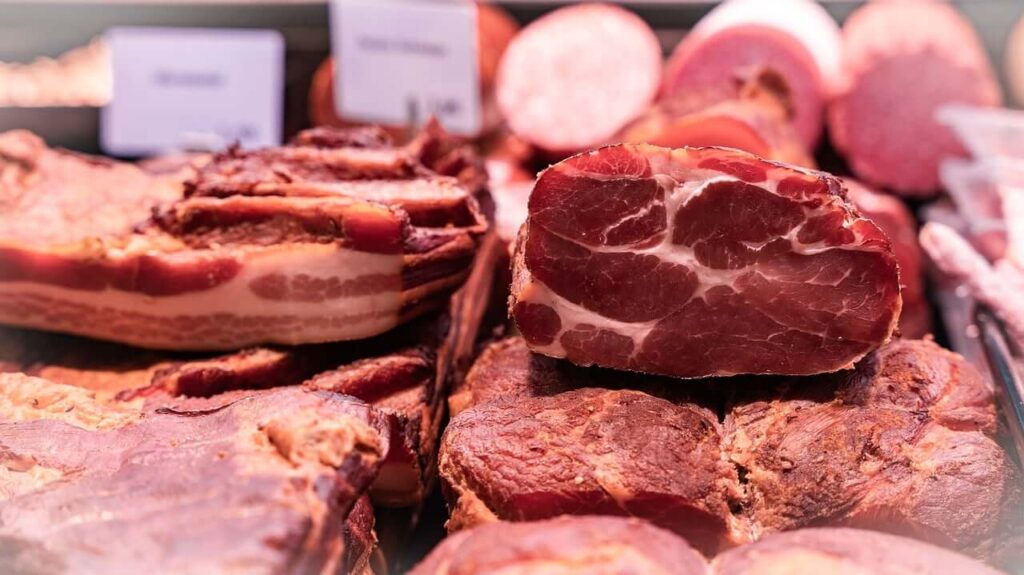
The meat industry is already looking at how it can encourage people to buy red meat again
More and more people are choosing to reduce or eliminate meat consumption, and even flexitarians prefer poultry or fish to red meat. While the amount spent on red meat has increased over the last few years, the amount purchased has been steadily decreasing since 2020. This is good news for those of us who believe that a switch to plant-based foods is necessary, but of course the meat industry is doing what it can to lure back those who are either leaving or choosing to consume more moderately.
The AHDB (the Agriculture and Horticulture Development Board, part of the UK Department of the Environment) recently carried out research into how to encourage consumers to buy red meat more often again. The results showed that animal welfare is important to consumers and that they are looking for proof of this in the form of certificates and labels on packaging, but that the decision not to consume products that use animals is still to be made.
What encourages and discourages buyers?
The AHDB has carried out an analysis of customer data, which has led them to conclude that there is a need to re-motivate customers if meat companies want to increase their sales. The research aimed to understand how to optimise meat packaging and labelling to re-engage consumers with the red meat category.
The research was designed to help retailers and processors understand what consumers look for on food packaging that could influence their purchasing intentions.
We, at NEGYOSZ, regret that the resolution does not include why, in an age and at a time when awareness, sustainability and environmental protection are calling for a significant reduction in animal foods and a more plant-based diet, consumers should be lured back into a lifestyle that runs counter to these aspirations.
3 key incentives to be displayed on the packaging
What should be on the packaging to inspire customers? This was the main focus of the UK research, divided into 3 categories:
- Inspiration
The survey results showed that inspiration was the biggest driver of purchase intent. Customers were attracted by images of tasty food; therefore, it is essential to have this on the packaging as opposed to photos of animal farms and animals to increase sales. Consumers also found that information on cooking times gave them greater confidence – especially for lesser-known products. - Health and origin information
Consumers preferred information on health and origin to help them make an informed choice about their purchase. Health is a driving force for purchasing (according to the UK survey), in particular low fat, vitamin and mineral content is important information for them. It is also important to emphasise British (local) provenance, and to indicate farming methods (e.g. grass-fed or free-range) and all insurance schemes.
The research also shows that to stimulate sales, packaging should highlight the consumer benefits of red meat, particularly low fat and vitamin B12, making sure that it is clear that these are natural attributes and not artificially added.
Consumers like to see origin information highlighted and, where possible, insurance scheme logos on packaging. - Reassurance about the environment and farming
Customers who reduced their meat consumption were most impressed by the information on farming and sustainability.
A further finding of the research is that it is not worth cluttering labels with too many messages, as this makes it difficult for consumers to understand. The ideal was to use a longer message and a few simpler points. Customers did not like labels and stickers that covered too much of the product inside the packaging.
The position of NÉGYOSZ
We find it interesting and welcome the fact that animal welfare, farming, feed (of which grazing is the lowest percentage) and place of origin are increasingly important factors for consumers, so they seem to be willing to make responsible consumer choices. At the same time, they do so in the belief that red meat is healthy, sustainable, and if the measures labelled as animal welfare are certified to be adhered to by the farm, then all is well.
For us, this means that something has started, but in order to provide consumers with credible information on the environmental and health impact of meat, red meat in this case, for example, and also the animal rights situation, we still have a lot of work to do across Europe.